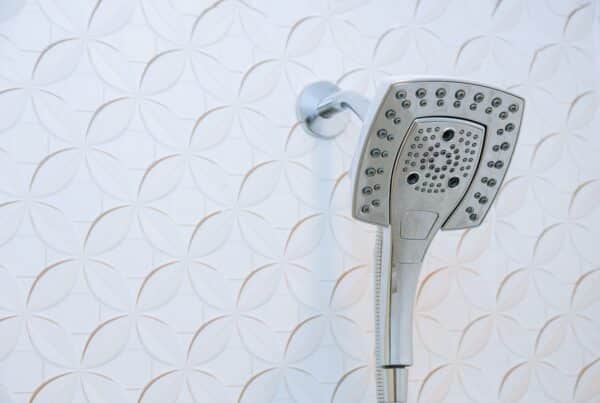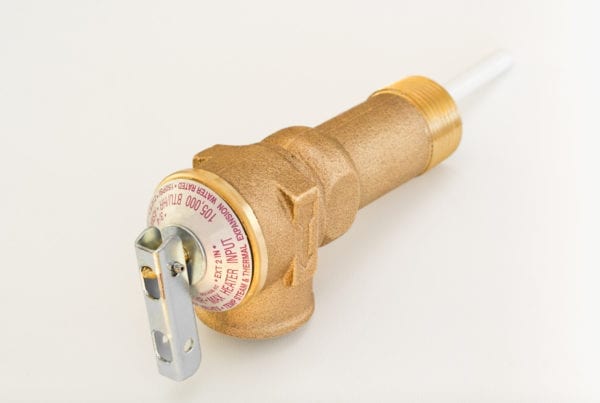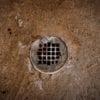
Waking up on a cold morning will send any homeowner for a hot shower. Unfortunately, the water temperature does not seem anywhere near the warmth that you were hoping for. Is the thermostat on your unit damaged? Is it malfunctioning during your time of need? Regardless of the potential issue, you want a hot shower. So, it is time to turn up the temperature on your thermostat and hopes that it doesn’t burn you. How to turn up the water heater? Follow the step-by-step process listed below to safely turn up your water heater.
Let’s take a look below at what the steps are to turn up the temperatures.
What Are My Safest Temperatures?
Believe it or not, when dealing with a water heater, there are safe temperatures and higher safe temperatures. Let’s take a look at the recommended temperatures for safety.
- Lowest safe temperature – At 120 degrees Fahrenheit your unit can kill bacterial growth that is harmful to humans. Additionally, this is the safest temperature for keeping the highest energy efficiency in your home.
- Highest safe temperature – The higher the temperature rises the faster disease and bacteria is killed. In most cases, it is recommended that you set your unit to 140 degrees Fahrenheit. This is meant to protect your family’s health. However, this temperature is very hot and can cause damage to your skin. Be sure not to expose yourself or any young children or elderly adults to this temperature for longer than five seconds. Find the medium on your faucets for hot and cold water.

How Do I Turn Up My Water Heater Temp?
The type and style of water heater that is located in your home will determine how you adjust the temperature. For many tankless water heaters, the temperature is adjusted digitally, while gas or electric water heaters will likely have a dial. The dials are located at the bottom or base of the unit. Let’s take a look below at the steps needed to adjust the temperatures.
- Turn off the power – Flip the circuit breaker that is associated with the water heater.
- Find the Thermostat – Locate the access panel to the thermostat and remove it.
- Pull back the insulation – Gently remove the insulation that is located between the access panel and the thermostat.
- Adjust – Use a flathead screwdriver to adjust the temperature settings on the thermostat. Be sure to check for a second thermostat. If your unit has two thermostats, the top one will need to be set a little higher than the bottom one.
- Replace the insulation – Gently place the insulation back the way you found it.
- Reconnect the panel – Connect the access panel back into its place.
- Flip the breaker – Turn the circuit breaker that is dedicated to the water heater back on.
- Gas water heater – You will possibly need to relight the pilot light for the water heater.
After you have finished setting the temperature adjustments, test the water temperature. Use a cooking thermometer and run the hot water onto it to determine that the setting changes worked. Check your tap water as well as the shower water to ensure the temperatures are identical.
Other Recommended Maintenance
Now that you are aware of how to turn up your water heater, you might need to reset it. Understanding how to reset your water heater will align with your ability to turn the temperature up on your water heater. Be sure to read up on what resetting the water heater entails.
Next, keep in mind that after you have adjusted your water heater temperatures and reset your water heater as needed, the hot water might not flow right away. The further you are from the water heater, the longer it takes for the water to heat up. Be sure to be patient and read up on why it might take water longer to heat up.
Lastly, be sure to contact a professionally licensed master plumber if your tankless water heater is leaking. After you have finished turning up the water temperature on your unit, it is possible that your temperature wasn’t sufficiently heated due to a leak.

When Do I Call A Professional?
Dealing with a water heater issue can be very complex. However, in some cases, it is very easy to make adjustments. The newer technology makes it simple to adjust the thermostat on your unit. Be sure to keep the water temperature in the safe zone. If you aren’t sure what you are looking to adjust, call on your local professionally licensed master plumber. Also, reach out to your local home inspection team for a full plumbing system inspection. Additionally, they can refer you to a reputable master plumber.
Conclusion
Finding a master plumber to assist with adjusting the temperature of your unit isn’t necessarily a difficult project. However, having the comfort of knowing that you aren’t putting anyone’s skin in danger is necessary. In this case, use your local home inspection team to conduct a full plumbing system inspection during a full home inspection. They can ensure that any adjustments made to the temperature of your unit are done correctly. Call on Avalon Home Inspections, we conduct home inspections in Greenville, SC, and Atlanta, GA.






